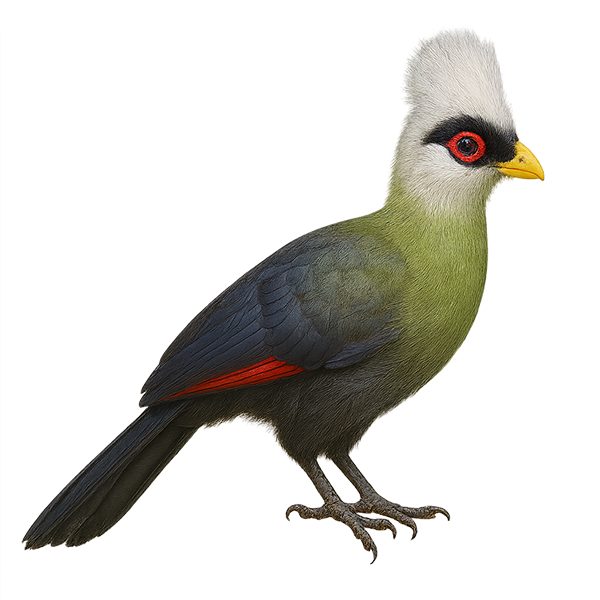Your wildlife photography guide.
Explore the white-crested turaco in detail, study its behavior, prepare your shots.
Where to observe and photograph the white-crested turaco in the wild
Learn where and when to spot the white-crested turaco in the wild, how to identify the species based on distinctive features, and what natural environments it inhabits. The WildlifePhotographer app offers tailored photography tips that reflect the white-crested turaco’s behavior, helping you capture better wildlife images. Explore the full species profile for key information including description, habitat, active periods, and approach techniques.
White-crested Turaco
Scientific name: Turaco leucolophus

IUCN Status: Least Concern
Family: MUSOPHAGIDAE
Group: Birds
Sensitivity to human approach: Suspicious
Minimum approach distance: 10 m
Courtship display: April to June
Incubation: 22-24 jours
Hatchings: April to July
Habitat:
Tropical forests, wooded savannas, wetlands
Activity period :
Primarily active during the day, with peak activity in the morning and late afternoon.
Identification and description:
The White-crested Turaco is a striking bird known for its distinctive white crest and vibrant green plumage. Native to the forests of West Africa, it is often seen in the canopy where it primarily feeds on fruits, but also flowers and leaves. Measuring about 43 cm in length, this bird has a fast and direct flight. Its call is a loud and repetitive "kow-kow". Although sociable, it remains cautious around humans. The White-crested Turaco plays an important ecological role by dispersing the seeds of the fruits it consumes. Its beauty and intriguing behavior make it a subject of interest for ornithologists and nature photographers.
Recommended lens:
400 mm – adjust based on distance, desired framing (portrait or habitat), and approach conditions.
Photography tips:
To photograph the White-crested Turaco, it is advisable to use a telephoto lens of at least 400mm to capture detailed images without disturbing the bird. Look for areas where fruits are abundant, as these birds are often attracted to fruiting trees. Be patient and discreet, as although they are sociable, they remain suspicious of humans. Morning is the best time to observe them, as they are more active at this time. Use a tripod to stabilize your camera and get sharp images.
The WildlifePhotographer App is coming soon!
Be the first to explore the best nature spots, track rutting seasons, log your observations, and observe more wildlife.
Already 1 431 wildlife lovers subscribed worldwide

